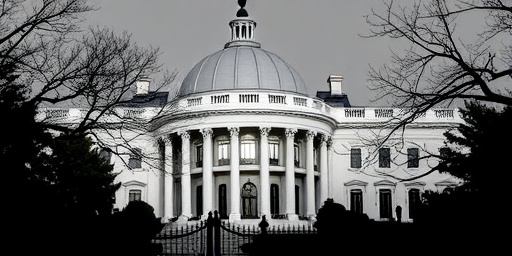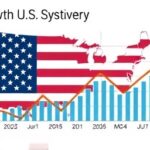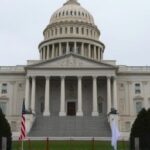The U.S. economy demonstrated remarkable resilience in the third quarter of 2025, posting a solid GDP growth rate of 2.8% annualized, fueled by surging business investment and steady consumer demand. This performance comes even as an escalating federal government shutdown threatens to inject uncertainty into the final quarter of the year, potentially derailing the positive momentum.
Economists had anticipated a more modest expansion around 2.2%, but the actual figures released by the Bureau of Economic Analysis on Thursday surpassed expectations. Key drivers included a 4.1% jump in business investment, particularly in technology and infrastructure sectors, while consumer spending rose by 2.5%, marking the strongest quarterly gain since early 2024. However, the ongoing partisan deadlock in Congress over budget negotiations has led to a partial government shutdown since mid-September, furloughing thousands of federal workers and stalling non-essential services.
This robust showing underscores the underlying strength of the U.S. economy amid global headwinds, but experts warn that prolonged shutdown disruptions could shave up to 0.5 percentage points off Q4 growth. ‘We’re seeing the economy’s breadth and depth at work here,’ said Dr. Elena Vasquez, chief economist at the Federal Reserve Bank of New York. ‘Businesses are investing aggressively, consumers are spending confidently, but the government shutdown is like a dark cloud on the horizon.’
Business Investment Surges, Bolstering Key Sectors
At the heart of the Q3 GDP growth was a remarkable uptick in business investment, which expanded by 4.1% after adjusting for inflation. This surge was broad-based, with non-residential fixed investment leading the charge. Companies poured resources into equipment and software, up 5.2%, driven by advancements in artificial intelligence and renewable energy technologies. For instance, major tech firms like those in Silicon Valley reported capital expenditures exceeding $150 billion for the quarter, aiming to capitalize on emerging markets in cloud computing and data analytics.
Structures investment, including commercial real estate and manufacturing facilities, also contributed positively, growing by 3.7%. The manufacturing sector, in particular, benefited from reshoring initiatives spurred by recent trade policies. Automakers and semiconductor producers invested heavily in domestic plants, with Intel announcing a $20 billion expansion in Ohio alone. This trend reflects a strategic pivot by U.S. businesses to reduce supply chain vulnerabilities exposed during the pandemic and geopolitical tensions.
Intellectual property products, such as research and development spending, rounded out the gains, increasing by 4.5%. Pharmaceutical giants like Pfizer and Moderna allocated billions to biotech R&D, accelerating vaccine and therapeutic innovations. These investments not only propped up GDP growth but also positioned the U.S. economy for long-term productivity gains. According to a report from the Conference Board, such capital inflows could add an extra 0.3% to annual growth if sustained.
Yet, the government shutdown poses risks to this momentum. Federal funding cuts have delayed infrastructure projects, including highway repairs and broadband expansions under the Bipartisan Infrastructure Law. Small businesses, which rely on government contracts, are feeling the pinch; the National Federation of Independent Business noted a 15% drop in new orders from federal agencies since the shutdown began.
Consumer Demand Holds Firm, Weathering Inflation Pressures
Consumer demand remained a pillar of strength, accounting for nearly 70% of the Q3 GDP growth with a 2.5% increase in personal consumption expenditures. Households continued to spend on durable goods, up 3.8%, including automobiles and household appliances, as pent-up demand from earlier supply shortages eased. Retail sales data from the Census Bureau showed a 1.2% month-over-month rise in September, with e-commerce platforms like Amazon and Walmart reporting record traffic.
Services spending, which makes up the bulk of consumer outlays, grew by 2.1%, led by healthcare and leisure activities. Americans flocked to restaurants, travel destinations, and entertainment venues, with airline passenger numbers rebounding to 95% of pre-pandemic levels. The leisure and hospitality sector added 250,000 jobs in Q3, per Labor Department figures, supporting this spending spree.
Underlying this resilience was a labor market that stayed tight, with unemployment hovering at 3.9% and wage growth at 4.2% year-over-year. However, inflation cooled to 2.4% from the Fed’s preferred 2% target, giving consumers more breathing room. ‘Families are prioritizing experiences over goods, but they’re not cutting back overall,’ observed Sarah Kline, director of consumer insights at Nielsen. Her firm’s surveys indicated that 62% of respondents felt optimistic about their financial situation, up from 55% in Q2.
The government shutdown, however, is testing this confidence. Furloughed federal employees—over 800,000 as of late September—face delayed paychecks, potentially curbing discretionary spending. Economists at Goldman Sachs estimate that every week of shutdown could reduce consumer demand by $1.5 billion, with ripple effects in retail and services. Low-income households, already stretched by rising energy costs, are particularly vulnerable, as food assistance programs like SNAP face administrative delays.
Government Shutdown Casts Long Shadow Over Fiscal Stability
The partial federal government shutdown, now in its sixth week, stems from deep divisions over spending priorities, including defense allocations and social safety nets. House Republicans pushed for deeper cuts to non-defense discretionary spending, while Democrats demanded protections for programs like Medicaid and clean energy subsidies. With no resolution in sight, essential services like air traffic control and national parks remain operational, but backlogs are mounting.
The economic toll is already evident. The shutdown has idled 2.3 million non-essential workers, leading to an estimated $11 billion in lost productivity by October’s end, according to the Congressional Budget Office. National parks, a boon for tourism, saw visitor numbers drop 20% in affected areas, hurting local economies in states like California and Colorado. Border security and immigration processing have slowed, impacting businesses reliant on international trade.
Financial markets have reacted with caution; the S&P 500 dipped 1.8% in the past month, reflecting investor jitters over fiscal policy gridlock. Treasury yields rose slightly as borrowing costs for the government ballooned, with the debt ceiling debate looming in November. ‘This isn’t just a Washington problem—it’s hitting Main Street,’ warned Treasury Secretary Janet Yellen in a recent statement. She urged bipartisan action to avert a deeper crisis.
Historically, shutdowns have been short-lived, but the 2018-2019 impasse lasted 35 days and cost the economy $0.2% of GDP. Current projections from Moody’s Analytics suggest a similar or worse impact if unresolved by mid-November, potentially tipping the U.S. economy toward stagnation.
Experts Predict Q4 Challenges but Highlight Recovery Pathways
Looking ahead, analysts foresee a bumpy Q4 for the U.S. economy, with GDP growth potentially slowing to 1.5-2.0% due to the government shutdown’s drag. Business investment might cool as firms hold back on expansions amid policy uncertainty, while consumer demand could soften if furloughs lead to precautionary saving. The Federal Reserve, in its latest minutes, signaled a pause on rate hikes but readiness to cut if shutdown effects worsen.
Sector-specific outlooks vary. Tech and healthcare are expected to weather the storm better, thanks to private funding, but construction and government-dependent industries face headwinds. The ISM Manufacturing Index fell to 48.7 in September, indicating contraction, partly blamed on federal procurement halts.
Positive notes include robust export growth, up 2.9% in Q3, buoyed by a weaker dollar and demand from Europe and Asia. Renewable energy investments, decoupled from federal budgets, continue apace, with solar installations surging 25% year-over-year. ‘The economy has buffers—strong corporate balance sheets and a resilient workforce—that can absorb short-term shocks,’ said Mark Zandi, chief economist at Moody’s. He recommends stimulus measures, like expedited small business loans, to mitigate damage.
Politically, midterm elections in November could force a shutdown resolution, as lawmakers seek to avoid voter backlash. Bipartisan talks have gained traction on a short-term funding bill, potentially restoring operations by early December. If achieved, the U.S. economy could rebound swiftly in 2026, with projections for 2.5-3.0% annual GDP growth. Investors are watching closely; a swift end to the impasse might spark a market rally, reinforcing the U.S. economy’s status as a global powerhouse.
In the broader context, this episode highlights the fragility of fiscal policy in sustaining economic momentum. As businesses and consumers navigate these uncertainties, the path forward depends on Washington’s ability to prioritize stability over partisanship. With holiday spending season approaching, any prolonged disruption could test the limits of the U.S. economy’s vaunted adaptability.









